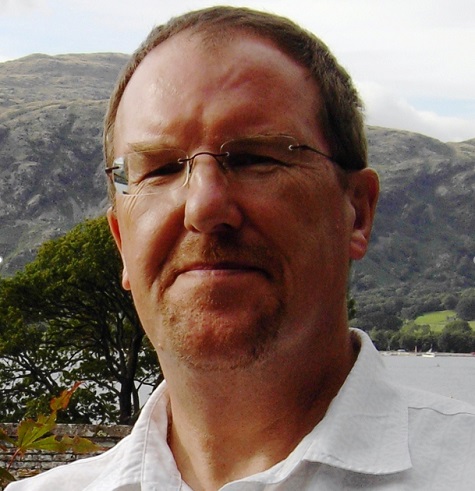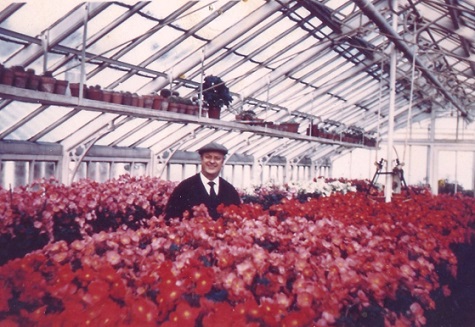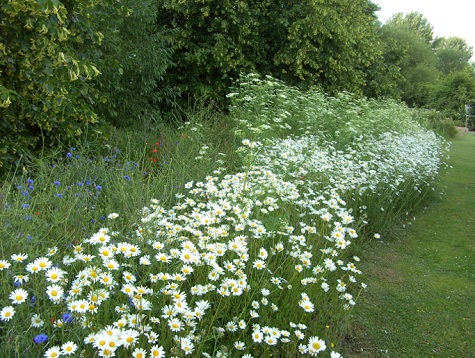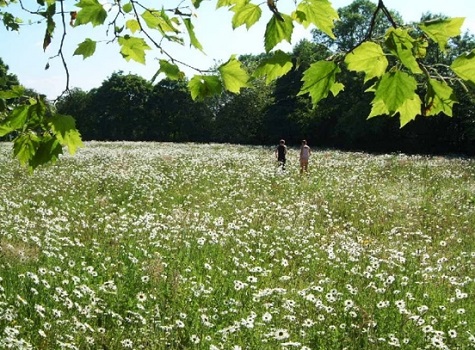TurfPro editor, Laurence Gale writes:
One of the biggest challenges our industry faces in the coming years will be inspiring the next generation of turf professionals to join our sector. We desperately need to start finding ways to encourage more people to come and work in this diverse, international industry.
To help start this process, I have asked a number of our leading professionals to write a piece about how they came to work in this industry and the opportunities it has given them.
Bernard Sheridan, Parks Consultant - Interim manager

Tell us about yourself?
I am a semi-retired old-timer ‘parkie’, currently working as a consultant and interim manager wherever and whenever required, in the green spaces sector.
There are many routes into parks management and mine was by way of the horticulture and sports turf sector.
I started my career in the early 1970s working for Manchester Recreation Dept in Wythenshawe Park firstly on an outside mobile gardening gang, later transferring to the large glasshouse range when it was a fully productive working nursery. I then spent many years working practically in the private sector as a gardener, head gardener and head groundsman. I attained both the RHS Master of Horticulture and the National Diploma in the Science and Practice of Sportsground Management from the Institute of Groundsmanship in my spare time, and I moved from the practical side as Grounds Manager at the Northern Lawn Tennis Club into parks management at Stockport Council in 1990.
I eventually became Head of Environmental Services for Trafford Metropolitan Borough Council, responsible for Parks and Countryside, Grounds Maintenance, Arboriculture, Waste Management, Highways and Street Lighting, Streetscene Services, Warden Services etc.
When I retired, I missed working in parks and green spaces and wanted to give something back, so now work providing advice and management support to local authorities and various organisations, undertaking many assignments across the UK.
I am a Chartered Horticulturist and Member of the Chartered Institute of Horticulture and an Association of Public Service Excellence (APSE) Associate;
I have been a Green Flag Award judge for over 20 years, have recently become an RHS NW in Bloom judge and have had articles published in various magazines relating to current issues in the green spaces sector. I enjoy our garden where I’ve created varied habitats to encourage wildlife, I dabble in bonsai, and, with the family, visited and photographed parks and gardens throughout the UK and the world, including the lively Yoyogi park in Tokyo and the sublime Ryo-Anji garden in Kyoto.
Who or what inspired you to take up your career?
My Dad was a brilliant grower and allotmenteer, but when he died suddenly in my late teens, I wanted to keep his garden up to scratch, so I took up evening horticulture classes at South Manchester College as an enthusiastic novice. The tutors could see I was keen, so suggested I apply for a vacancy with the local park department, which got me started. I found I couldn’t learn quickly enough about plants, gardens, and horticulture in general, becoming passionate about the subject in a way nothing else had managed to grab me before.

Which individuals have inspired you or helped you develop professionally?
Too many to mention them all! I have worked with many inspirational colleagues and every day has been a school day! The excellent tutors at South Manchester College set me off on my career path, with Dave Brayshay being ‘The Master’ who guided me and many students to success in the RHS exams. Harry Anderton, the expert Senior Propagator at Wythenshawe Park and Derek Myers, a war-veteran, disabled at Dunkirk, and champion grower of show hydrangeas, were both early mentors and inspirations.
When I came into parks management, Alan Barber was the great parks campaigner who inspired me and a generation of ‘parkies’, along with Ken Warpole and Liz Greenhalgh et al with their timely Parklife Report.
Reading the work of the great biologist Edward O Wilson, who coined the term biodiversity, first made me aware of the ‘biophilia effect’ and the health-enhancing effect of nature and green spaces which has led to the health and green space agenda promoted by many services.
In the subject of design and planting green spaces, Piet Oudolf, Noel Kingsbury, Nigel Dunnet and James Hitchmough have set the benchmark for a legion of practitioners in ‘naturalistic planting’, and more recently Dave Goulson has drawn the attention of parks managers to the current ‘sixth extinction’ of wildlife, and our role in protecting biodiversity.
And it was Laurence Gale who first persuaded me to write articles, which helped me clarify my thoughts on various aspects of the industry, and then build up a website, www.theparkkeeper.com, although it is now somewhat neglected as I seem to find little time these days to write for fun in these busy times!

What machinery or innovations have in your opinion helped drive our industry forward or helped make your job easier?
Where to start with this question?!
- ICT development - smartphones and tablets for mobile working, social media, CCTV to monitor anti-social behaviour, GIS for mapping, management software for grounds and tree maintenance for starters.
- Sports pitches -parks have been transformed with modern equipment and drainage systems. The weekend goalmouth mud-baths have not gone completely, but where primary drainage with secondary sand-banding is properly installed, the carrying capacity of parks pitches have been hugely improved. Couple this with verti-draining, air injection and linear decompaction equipment such as Immants Shockwave and playing surfaces remain playable where previously cancellations were commonplace. Will Desso-type pitches ever be affordable in parks?
- Wildflower regimes - probably the most recent impressive leap forward in parks management has followed the development of wildflower seed supplies which allowed the change to long grass, wildflower meadow and naturalistic planting regimes, as thoughtful parks managers attempt to mitigate the impact of the ‘sixth extinction’ on biodiversity with wildlife-friendly designs. Sadly, the equipment required for cutting and clearing long grass, which is vital for their success, is still underdeveloped in the industry.
What concerns do you have for the future of our industry?
How much space do I have?!
- The role of parks and open spaces as natural capital and their contribution to ecosystem services, especially for biodiversity and nature recovery is still only marginally recognised, even by parks professionals.
- The contribution that local green spaces make to healthy lifestyles and physical and mental wellbeing is equally undervalued; even after the evidence of their crucially important role during the pandemic, the Government has ignored parks in its spending plans. Why are parks so invisible on the national agenda?
- Another concern is that housing, transport and building development, after swallowing great tracts of land, usually leaves behind an aftermath of fragmented parcels of damaged land as public open space with cheap planting, ruined habitats, budget play equipment and inferior infrastructure which Council’s, or more awkwardly, management companies are left to cope with.
How do you think we can entice the next generation of industry professionals to come and work in this industry?
I believe there will always be young people who love practical outdoor work, so we need to ensure there is high-quality training to ensure professional standards are upheld and we should provide structured career paths to ensure they are retained within the sector. We can also attract young people by building on their interest in nature and plants and their real concern for current issues such as protecting the environment, tackling global overheating and combatting the ecological carnage we are inflicting on habitats and species. The future parks sector should allow them to make a real difference.
Similarly, promoting the therapeutic value of green spaces and nature for healthy lifestyles and physical and mental wellbeing will register with many young people, and there will always be the attraction of outdoor sports and activities in the green space sector. Using social media and emerging ICT, such as augmented reality, is a good entry route, but young people need to be involved in parks management, encouraged to be part of planning, and be able to progress their ideas if they are to flourish in the sector.
Parks management has been going for well over a century, yet for some reason has never organised itself into an established coherent profession with career structures and a professional body. As a result, senior parks managers are becoming extinct, with management and maintenance often separated, and parks services morphed into Streetscene or ‘Cleaner, Greener’ departments. The hyper-functional complexity of open spaces management is being dumbed-down to cleaning and maintenance contract management while the sector has been a soft target area for cuts and ignorant interventionists. At long last, with the emergence of the Parks Management Forum, there is a glimmer of hope that ‘parkies’ may organise themselves into a professional body and move forward as the authoritative voice for the sector.

How have recent events impacted on your job and how would you like to see the government support our industry?
The fast-tracking of Covid risk assessments, constant putting up and removal of signage according to the changing guidance, the tearing down of signage and hazard tape, and poor behaviour by the public, the wear and tear due to greater use of paths and grassed areas etc have been the hallmarks of parks in the time of Covid-19. Many, including me, have been home-working with occasional site visits, but even these were stopped by the year-end. It has been far from ideal, with much work on hold, but it has allowed us to focus on some priorities and catch up with documentation! Where I currently work, the service is fortunately not too reliant on generated income.
There are many ways the government can support the industry, but I am not holding my breath! There will perhaps be some benefits from the Environment Bill and subsequent legislation, particularly on nature recovery, but generally parks will remain invisible, underfunded and underachieving until there is recognition through a national body that is close to government. Cabespace was only culled around ten years ago so I suspect there will be no great rush to resurrect anything similar, and if the vital role of green space during the pandemic didn’t signal a need for investment and support from a government that has spent so extravagantly elsewhere then parks and open spaces will continue to remain a Cinderella service. That is why we need to support and join the Parks Management Forum while we can!